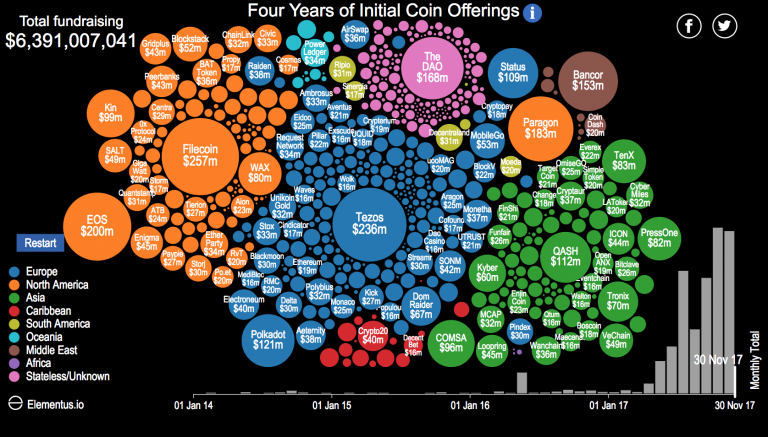The initial coin offering marketplace has a sketchy reputation thanks to scammers, and it’s in the spotlight of financial regulators all over the world—but that hasn’t scared investors away yet. Quite the opposite, in fact: according to the Wall Street Journal, initial coin offerings raised $11.8 billion between January and May of 2018—compared with $5.5 billion in all of 2017. That’s despite incredible churn among ICOs: more than 1,000 digital coins have already gone kaput.
Two monster offerings, Telegram’s for $1.7 billion and EOS’s for $4 billion, make up a big chunk of what investors have shelled out. Even still, more startups are raising more money via token sales this year, according to the WSJ’s analysis.
There’s a big difference between a typical ICO now and one in 2017, though. Most of the money is now being raised via private offerings, while public token sales have become rare. Why? Plying retail investors with high-stakes propositions that could (and often do) lose them a ton of money is not a good look. Most ICO projects these days are also taking steps to comply with regulators. Bart Stephens, cofounder of Blockchain Capital, told the WSJ that what we are seeing is the “normalization” of the ICO market.
If that’s what’s keeping the money flowing, it would be consistent with the conclusions of a new working paper (PDF) from the National Bureau of Economic Research, which essentially concludes that the less shady an ICO project is, the more successful it tends to be. The authors found that liquidity and trading volume are higher when coin issuers “offer voluntary disclosure, credibly commit to the project, and signal quality.”
Animation by Elementus

